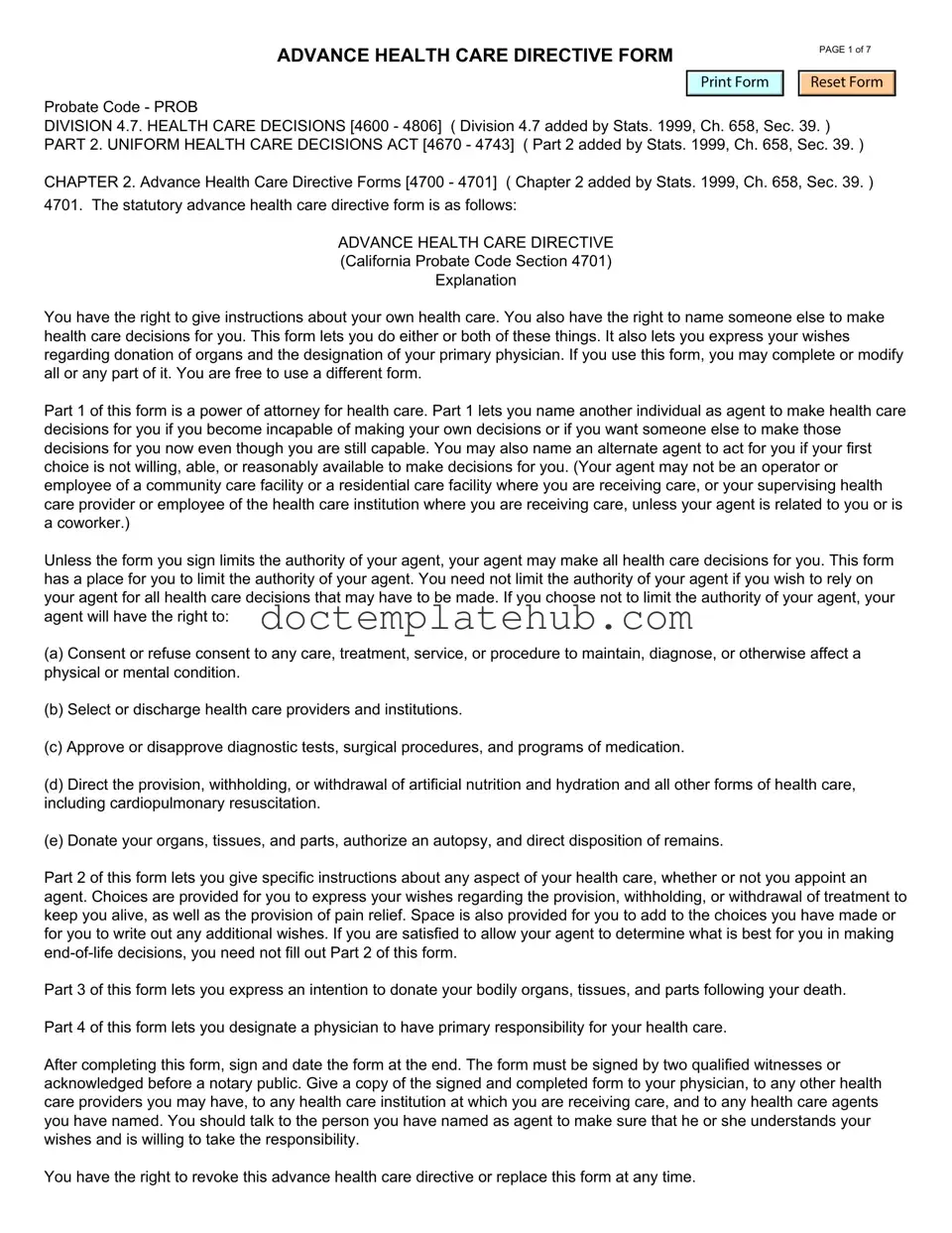What is a California Advanced Health Care Directive?
The California Advanced Health Care Directive is a legal document that allows individuals to outline their healthcare preferences in case they become unable to communicate their wishes. It combines two important components: a healthcare power of attorney and a living will. This directive ensures that your healthcare decisions are respected, even when you cannot voice them yourself.
Who can create an Advanced Health Care Directive in California?
Any adult who is at least 18 years old and of sound mind can create a California Advanced Health Care Directive. This means you should be able to understand the nature and consequences of your decisions. If you meet these criteria, you can take control of your healthcare decisions, ensuring your wishes are honored.
What should I include in my Advanced Health Care Directive?
Your directive should clearly state your preferences regarding medical treatment and end-of-life care. This includes decisions about life-sustaining treatments, organ donation, and palliative care. Additionally, you can designate a healthcare agent—someone you trust to make decisions on your behalf if you are unable to do so. Be specific about your values and beliefs to guide your agent effectively.
Do I need a lawyer to create an Advanced Health Care Directive?
No, you do not need a lawyer to create a California Advanced Health Care Directive. The form is designed to be user-friendly, allowing individuals to fill it out without legal assistance. However, consulting a lawyer can provide additional peace of mind and ensure that your directive meets all legal requirements.
How do I ensure my Advanced Health Care Directive is valid?
To ensure your directive is valid in California, you must sign it in front of a notary public or two witnesses. The witnesses cannot be your healthcare provider, an employee of your healthcare provider, or someone who will inherit from you. Following these guidelines helps confirm that your directive is legally binding and recognized by healthcare professionals.
Can I change or revoke my Advanced Health Care Directive?
Yes, you can change or revoke your Advanced Health Care Directive at any time, as long as you are mentally competent. To make changes, simply create a new directive and ensure that it is signed and witnessed properly. If you wish to revoke your directive, you can do so verbally or in writing, but it is advisable to notify your healthcare agent and any healthcare providers of your decision.
What happens if I do not have an Advanced Health Care Directive?
If you do not have an Advanced Health Care Directive and become unable to communicate your healthcare wishes, decisions will be made by your family members or healthcare providers according to California law. This can lead to uncertainty and potential conflicts among family members. Having a directive in place helps ensure that your preferences are known and respected, providing clarity during difficult times.
